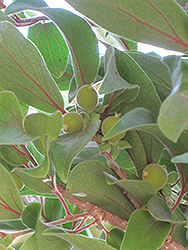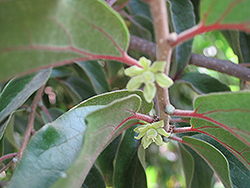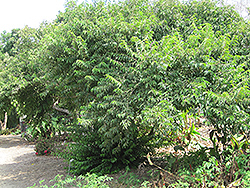Fri & Sat 8am - 8pm
Sun 8am - 7pm
Anytown, USA 12345
fax: 261.787.0463
e-mail: info@successgc.com


Plant Finder

Ceylon Gooseberry
Dovyalis hebecarpa (female)
Height: 19 feet
Spread: 25 feet
Sunlight:
![]()
Hardiness Zone: 9b
Other Names: Ketembilla, Kitambilla
Description:
A wonderful small shrub/fruit tree with a long, arching, spreading branches; can be grown as hedges when planted close together; produces small, round dark purple fruit with a juicy, tart and sweet flavor, ideal for jams, jellies, and preserves
Edible Qualities
Ceylon Gooseberry is a large shrub that is typically grown for its edible qualities. It produces deep purple round berries with red flesh which are typically harvested when mature. The berries have a tart taste and a juicy texture.
The berries are most often used in the following ways:
- Fresh Eating
- Eating When Cooked/Prepared
- Baking
- Preserves
Features & Attributes
Ceylon Gooseberry has grayish green deciduous foliage on a plant with a spreading habit of growth. The large fuzzy oval leaves do not develop any appreciable fall color.
This is a multi-stemmed deciduous shrub with a spreading, ground-hugging habit of growth. Its relatively coarse texture can be used to stand it apart from other landscape plants with finer foliage. This is a relatively low maintenance plant, and can be pruned at anytime. It is a good choice for attracting birds, bees and butterflies to your yard. It has no significant negative characteristics.
Aside from its primary use as an edible, Ceylon Gooseberry is sutiable for the following landscape applications;
- Accent
- Hedges/Screening
- Orchard/Edible Landscaping
Planting & Growing
Ceylon Gooseberry will grow to be about 19 feet tall at maturity, with a spread of 25 feet. It has a low canopy with a typical clearance of 4 feet from the ground, and is suitable for planting under power lines. It grows at a medium rate, and under ideal conditions can be expected to live for 40 years or more. This is a dioecious species, meaning that individual plants are either male or female. Only the females will produce fruit, and a male variety of the same species is required nearby as a pollinator.
This plant is typically grown in a designated edibles garden. It should only be grown in full sunlight. It does best in average conditions that are neither too wet nor too dry, and is very intolerant of standing water. It is not particular as to soil pH, but grows best in rich soils. It is somewhat tolerant of urban pollution. Consider applying a thick mulch around the root zone in winter to protect it in exposed locations or colder microclimates. This species is not originally from North America..


